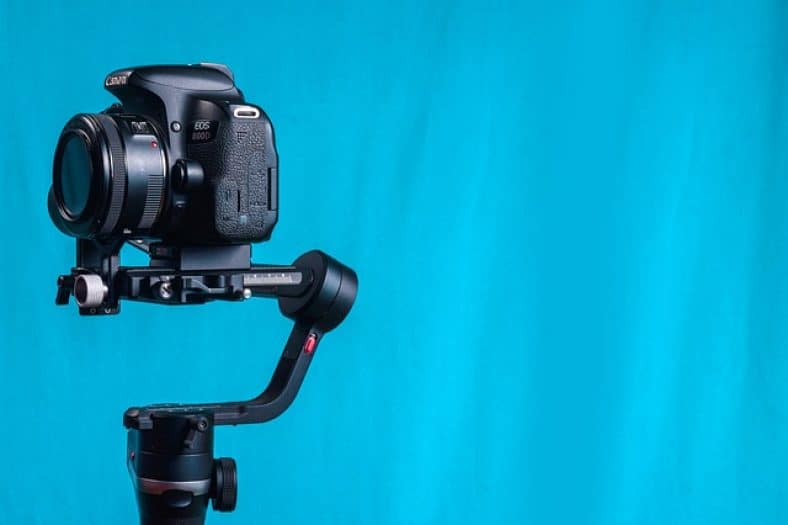A gimbal is a gadget that enables your digital camera to spin smoothly along its axis, and it is connected to sensors and motors. Gimbals with three axes are the most frequent nowadays. They help you capture seamless, smooth footage once you’re on the way by stabilizing your camera when you tilt, pan, and roll it.
Mechanical camera stabilizers were employed to avoid blurry footage in history. Gimbals, on the other hand, have a little more flexibility.
When photographing moving subjects, steadiness and range of motion are essential. A gimbal can help with this. Gimbals are great for taking still shots from difficult angles, but for videographers, they’re more essential. Furthermore, you may film handheld with confidence that your footage will be steady and blur-free with only a gimbal. Consider it the best approach to keeping a camera steady when you don’t have access to a tripod.
Videographers who have also worked in the industry for a long time are likely to be familiar with various professional video equipment and jigs and dollies. Gimbals can’t change these, but they’re a lot more mobile, which is ideal for content creators on the go.
Camera gimbal. How does it work?
Gimbals detect any undesired bumps or jolts in your footage using algorithms and sensors and then use motors to stabilize those instances.
Inertial Measurement Units, namely (IMUs), detect motion in 3-axis gimbals. Properly balance the camera, tilt the gimbal on every axis and keep it stationary as you go across the scene. What’s the best part?
The built-in computer on the gimbal can tell which motions are deliberate and which aren’t, ensuring that your sweeping views and panning scenes suit what you want.
3-axis gimbals could use this technology to create a cinematic yet beautiful effect in which the camera appears to float in the air.
On that point, many of the latest video drones come equipped with gimbals.
Finally, brushless gimbal motors are common. That means they’re completely silent, which is critical for the quality of your final product.
Are you on a tight budget? Although 3-axis gimbals provide the smoothest footage, they are costly. Choose a 1-axis but rather a 2-axis gimbal if you’re seeking a less expensive option. They’re both good beginner gimbals because they have similar abilities.
Is a gimbal needed?
Now for the million-dollar query: do you need a gimbal?
It’s worth investing in a gimbal if you’re a professional cameraman who cares about video quality. Handheld video might be hit or miss if you don’t have one. You’ll be restricted in your movements and may end up settling for less exciting shots. It’s also possible that you’ll end up with blurry images.
Unless you’re purposefully filming in a “raw” approach, such as for a documentary, the aim is to film stabilized footage.
A tripod will, of course, assist you in filming smooth footage. However, it will not provide the same flexibility and speed in moving your camera as a motorized gimbal. As a result, a gimbal is commonly used by sports and wildlife videographers to stabilize their cameras and monitor moving subjects.
Things to Keep in Mind If You’re Using a Gimbal like a Pro.
Prepare your shots ahead of time
Gimbal shooting can let you capture some beautiful shots, but it’s not as simple as it appears.
You don’t have time to lose, so plan your shots ahead of time. Shot lists are the blueprints for your shooting. And, thanks to modern software, it won’t take most of your time.
Even though the gimbal is just a simple mechanism, be sure to plan your shots ahead of time. To save time between photos, installing and un-mounting the cameras, shoot all of your gimbal shots simultaneously.
However, gimbals enable shooters to achieve similar results in less time, which is ideal for filmmakers on the go who lack time, space, or the patience involved in setting up all of the additional equipment.
Foreground subject placement
Ensure something unique is at the forefront of your photographs. It will draw attention to the camera’s movement. You’ll miss out on the gimbal’s full potential whenever you maneuver it around open space.
When you move it around a stationary subject, the audience is more engaged in what you’re displaying to them since they can see how they fit into the background.
It’s easier to notice the smooth movement that gimbals produce when there’s something worth looking at.
Gimbals benefit
Gimbals have other advantages besides capturing steady footage: they’re easy to set up compared to more professional stabilization equipment.
Designers can create devices that are much more dynamic than fixed devices using gimbals. It is also essential to orient a gadget so that it faces a set direction regardless of how its surroundings move or change.
They’re light and portable, which is vital if your filmmaking takes you on many excursions. They allow you to video for an extended time using your camera.
They allow you to adjust the angle and position of your camera with ease, reducing the amount of time you spend shooting. Other camera attachments, such as microphones, can be mounted on them.
They help you keep a better grip on your camera. They’re ideal for filming underwater and from the air.
Some gimbals may be linked to apps, which could also open up an entirely new world of new ideas.
